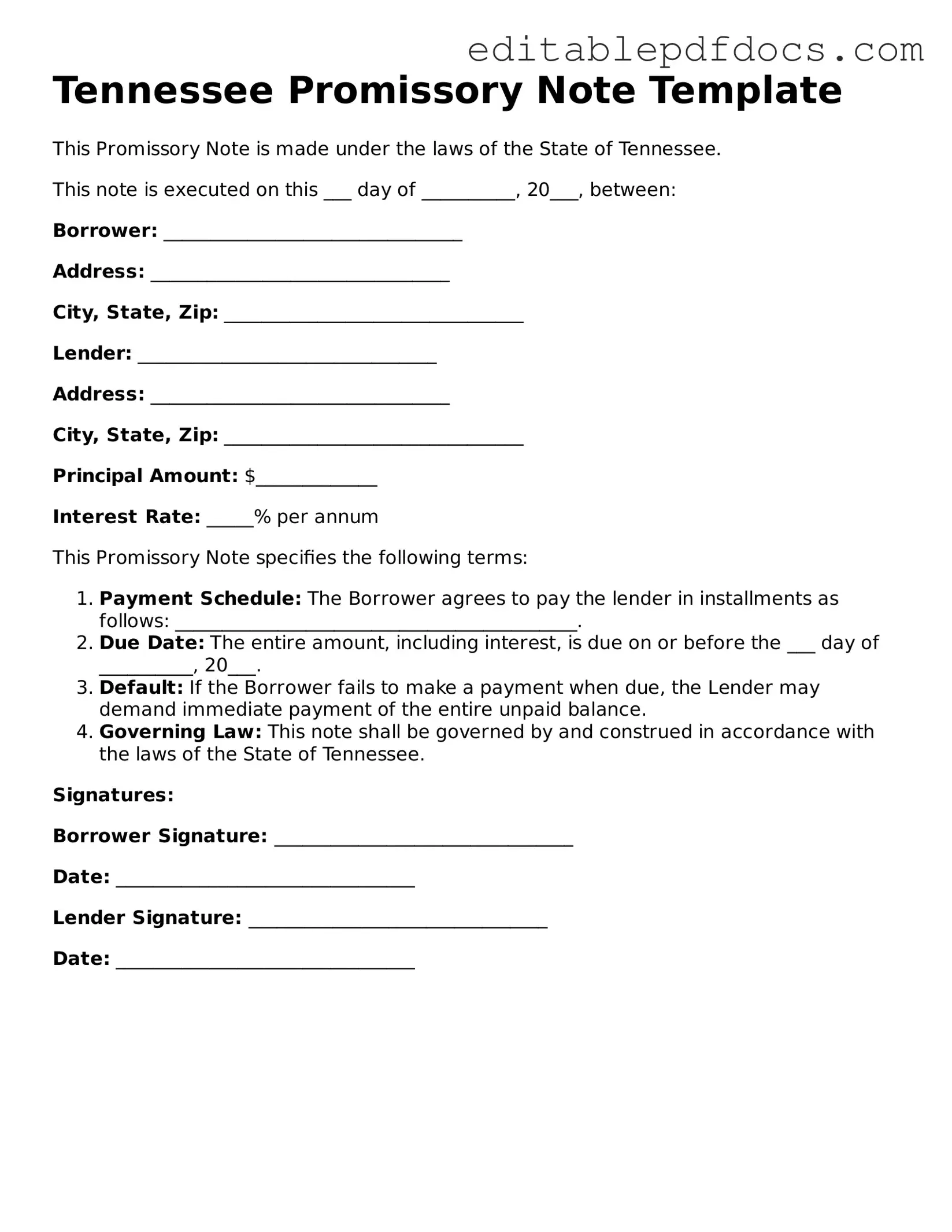When navigating the world of personal and business finance, understanding the tools available for borrowing and lending is crucial. One such tool is the Tennessee Promissory Note form, a straightforward yet powerful document that outlines the terms of a loan agreement between a borrower and a lender. This form serves several key purposes: it specifies the principal amount borrowed, the interest rate applicable, and the repayment schedule. Additionally, it addresses what happens in the event of a default, providing both parties with clarity and protection. The Tennessee Promissory Note is designed to be user-friendly, allowing individuals and businesses alike to formalize their financial arrangements without unnecessary complexity. By laying out the rights and responsibilities of each party, this form fosters trust and transparency, making it a vital component of responsible financial practices in Tennessee.
